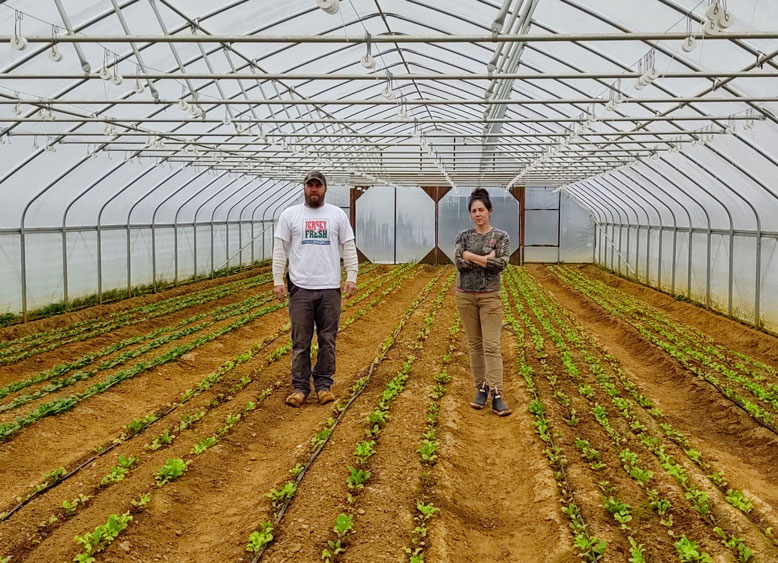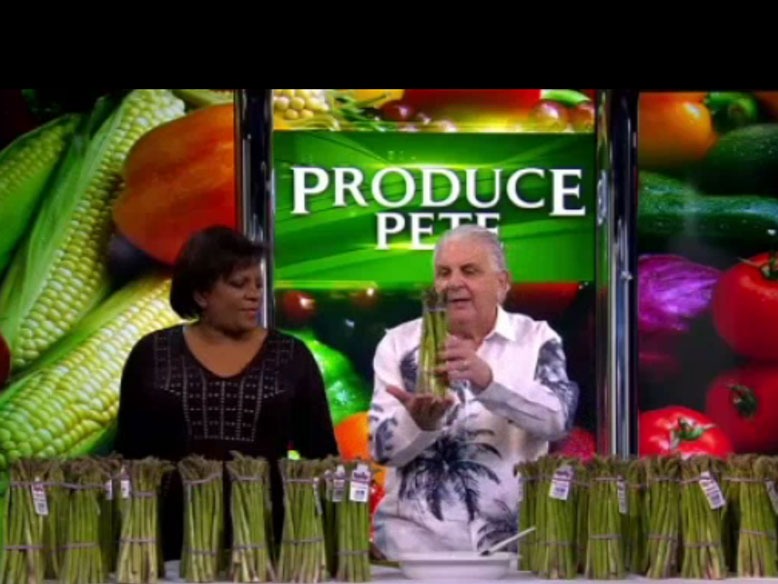
One of my most favorite things about this time of year is that it kicks off the annual produce season. Within that season, asparagus is famously among the first in the Garden State’s line-up of bounty, usually starting in late April and lasting through the end of May, and sometimes early June (depending on the weather).
Asparagus is a great New Jersey crop and thrives in the Garden State’s soil, especially in the sandier areas in the southern part of the state. In recent years, New Jersey has been the fourth largest grower of asparagus in the nation, with our farmers devoting 1,500 acres of land to the production of over 5 million pounds of asparagus that are worth nearly $10 million in sales.
All About Asparagus
Asparagus is the sweet, tender, early shoot of a plant in the lily family. Low in calories, asparagus is an excellent source of antioxidants, folate, potassium, and vitamins A, C and K, the latter of which is essential for blood clotting and bone health.
Asparagus can range in size from very thin spears to those as thick as the diameter of a nickel. People often think that thin stalks are younger, but that’s not the case at all—both young and mature asparagus can come in any size. Asparagus can be found in three colors—green, white and purple—but the most common is the long green variety. White asparagus is simply green asparagus that’s been covered with soil to blanch out the color; the flavor is about the same, but the texture may be more tender. Purple asparagus is purple at the tip and at leaf points and tends to have a pale stalk.
Farmers know that new asparagus crops can take three years to materialize, especially Karley Corris of Jeff’s Organic Produce, a 75-acre certified organic farm in Cream Ridge that she owns with her husband, Jeff Lidzbarski.

Husband-and-wife team Jeff Lidzbarski and Karley Corris, owners of Jeff’s Organic Produce in Cream Ridge Photo courtesy of Jeff’s Organic Produce
“We currently grow about three acres of asparagus and might get 30-40 bushels a week off of it,” says Corris, who planted asparagus crowns in 2013 and began harvesting the crop in 2016. “Asparagus is a perennial and, once planted, you can get a reliable yield off the same plot for as many as 10-20 years, at which point the yield begins to decrease.” According to Corris, “you’ll see asparagus year-round in the supermarket, but locally-grown asparagus is a very special and short-lived crop; based on the coolness of this year’s spring, we’ll start harvesting in early May and the crop will likely only go until early June.”
Though asparagus is labor-intensive to grow and harvest because every stalk has to be cut by hand, Corris said that the crop holds special meaning for her. “I love asparagus because it’s one of the crops that people most look forward to each year,” she said. “For farmers like us, asparagus is the ultimate harbinger of spring.”
Selection and Storage
When selecting asparagus, look for tight, dry tips that are fresh green or purplish in color—never yellowed or going to seed—and avoid tops that are wet or asparagus with an odor. The base of asparagus is usually white, woody, and tough; the whiter the coloration on the stalk, the more you’re going to have to throw away. Toughness is typically a function of temperature and time and asparagus spears get tougher—not larger—the longer they sit around.
In general, there’s very little difference in taste and texture between long, short, thick, or thin asparagus spears, but it’s helpful to select spears that are of a uniform size so that they’ll cook evenly. Freshness is key and asparagus will be at its best if you buy it the day you plan to use it, but it can stay as long as three or four days in the refrigerator.

Produce Pete shares tips on asparagus with anchorwoman Pat Battle during a recent segment on NBC Weekend Today in New York. Photo courtesy of Pete Napolitano/NBC
Preparation
Gently wash asparagus spears and snap off the tough bottom ends (snap them in two with your hands instead of cutting them and they’ll break just above the tough part). Steam or braise them in a small amount of water, but don’t overcook the asparagus or it will turn into a tasteless mush. The asparagus tips tend to cook faster than the stem ends, so try standing them up in a narrow pot and steaming them in about an inch of water. I fondly remember my Irish grandmother cooking asparagus in a coffee pot—she’d tie the bunch of spears around with string, stand them in an inch or two of water, and cook them for about five minutes, or until tender but still crisp. You can also sauté asparagus for three or four minutes with butter, adding a spoonful of water as necessary to prevent burning.
What’s true for most fresh vegetables is especially true for fresh asparagus—the less you do to it, the better it tastes. Asparagus is delicious lightly cooked and dressed with nothing more than a little butter, or olive oil and salt. It can also be added to soups, tossed into pasta dishes, enjoyed raw in salads, or blanched and served cold with a vinaigrette.
Following is a great recipe that my wife Bette makes in our house to celebrate New Jersey’s first signs of spring. I know you’ll enjoy it too!
Bette’s Baked Crusty-Crumb Asparagus
Ingredients:
18–24 asparagus spears
6 tablespoons butter
1 small yellow onion, chopped
3 cloves garlic, chopped
2 tablespoons Italian parsley, chopped
Pinch of tarragon
2 cups bread crumbs
Instructions:
Preheat oven to 350 degrees. Gently place asparagus spears into a skillet of boiling water and blanch. Drain the asparagus and place it in a buttered shallow baking pan. In a skillet, melt the butter and sauté the onion, garlic, parsley, and tarragon. Add the bread crumbs and mix well. Spoon the bread crumb mixture over the asparagus, cover the pan with foil, and bake for 10-15 minutes. Remove the foil and bake at 400 degrees for an additional 5 minutes to achieve a crusty top. Enjoy!
About “Produce Pete” Napolitano
With over 65 years of experience in the produce industry, New Jersey’s own “Produce Pete” Napolitano is a renowned fruit and vegetable expert, author, and television personality who’s appeared on a highly-popular segment on NBC’s Weekend Today in New York broadcast every Saturday mornings for over 27 years. For more information, visit Pete’s website.
About Susan Bloom
A contributor to New Jersey Monthly and a variety of other well-known local and national publications, Susan Bloom is an award-winning New Jersey-based freelance writer who covers topics ranging from health and lifestyle to business, food and more. She’s collaborated with Produce Pete on a broad range of articles for nearly a decade.
